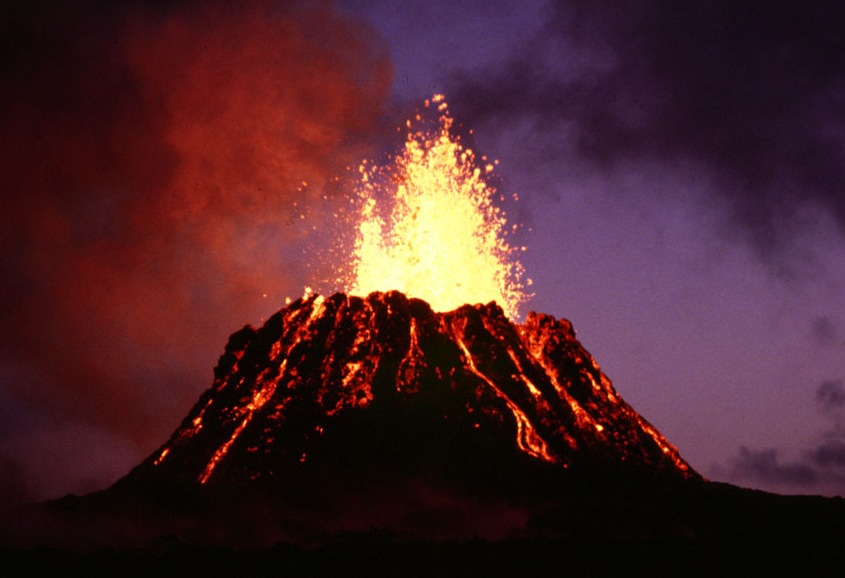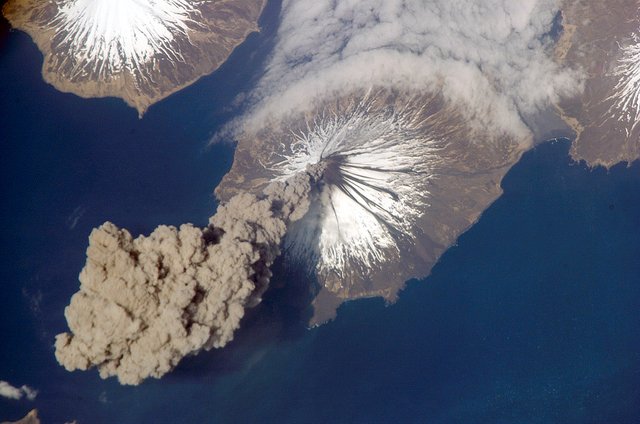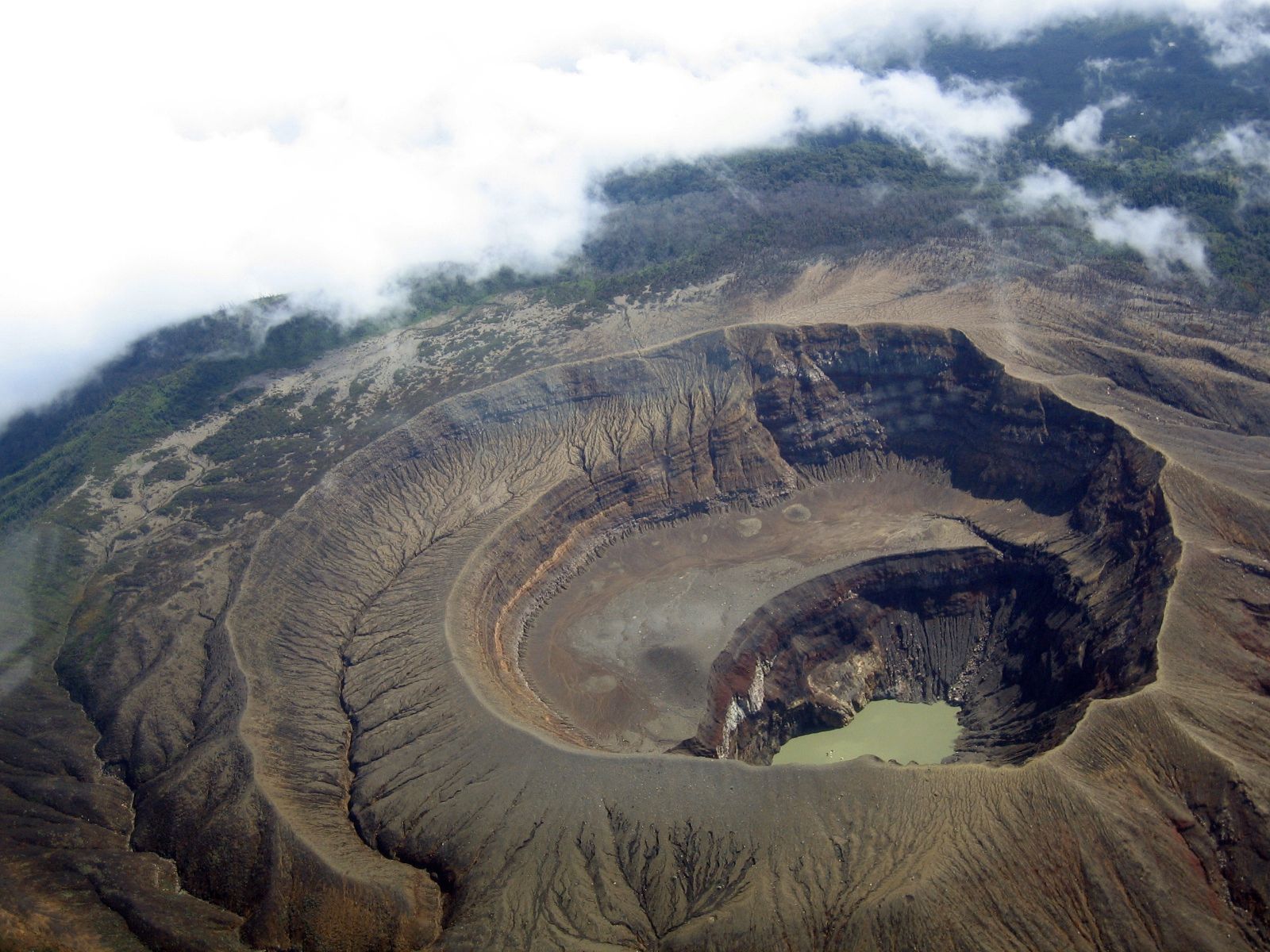Vulcanicity: intoduction
The earth underneath is broken up into sections called tectonic plates, and that the movement of these tectonic plates causes folding, faulting and earthquake. But it may also cause the molten magma from the mantle to start pushing its way up through the lithosphere or the earth's crust.

Lava flowing from a volcano
Sometimes the molten magma succeeds in finding its way out to the surface. It is then called lava. At other times it is trapped midway in the crust and is still called magma. Either action is known as vulcanicity or vulcanism. When the magma succeeds in being poured out to the surface, the action is called volcanic eruption, but when it is trapped underground, it is known as volcanic intrusion.
Volcanic eruptions may send both red hot lava, stones, gas, steam and even hot water through a pipe called the volcanic neck and out to the surface through a big hole which it opens on the earth known as crater. The lava may flow out gently, or get forcefully pushed up from the crater several hundreds of metres up in the sky. It either solidifies there and falls back in huge lumps called pyroclasts or volcanic bombs, or forms small particles of volcanic ash, some of which also fall down.

Volcanic ash plume from Mount Cleveland

Crater of Santa Ana Volcano, Salvador
The lighter particles are however blown away by the wind, sometimes for several hundreds of kilometres. The volcanic ash which was blown up to the sky from Krakatoa eruption of 1883 in Java encircled the earth several times. Solid lava and blocks also erupt from the crater, get thrown up in the sky and fall back, also as volcanic bombs. The fallen materials accumulate around the crater to build up the volcano or volcanic mountains.
On the other hand, the lava may flow out gently through a long crack in the earth, called fissure. Ordinary boiling water, steam and gas may also flow out gently like a spring, or come out in intermittent jets towering up into the sky.
Reference
https://www.livescience.com/27295-volcanoes.html

Awesome earth science 101... great addition! Should consider posting similar to #poleshift
Very informative for a short article. I love the study of volcanoes.
Good post don Felix!
Fun fact: different types of magma form different types of volcanoes. Magma's types are closely related to plate tectonic activity, so we can tell a lot about the underground from volcanoes on top.
For example, look at the west coast of the US and the Andes in South America. They form due to subduction of tectonic plates and generate stratovolcanoes. Mt St Helens is one such volcano.
Really cool pics. Excellent info.
Congratulations @donfelix! You have completed some achievement on Steemit and have been rewarded with new badge(s) :
Click on any badge to view your own Board of Honor on SteemitBoard.
For more information about SteemitBoard, click here
If you no longer want to receive notifications, reply to this comment with the word
STOP